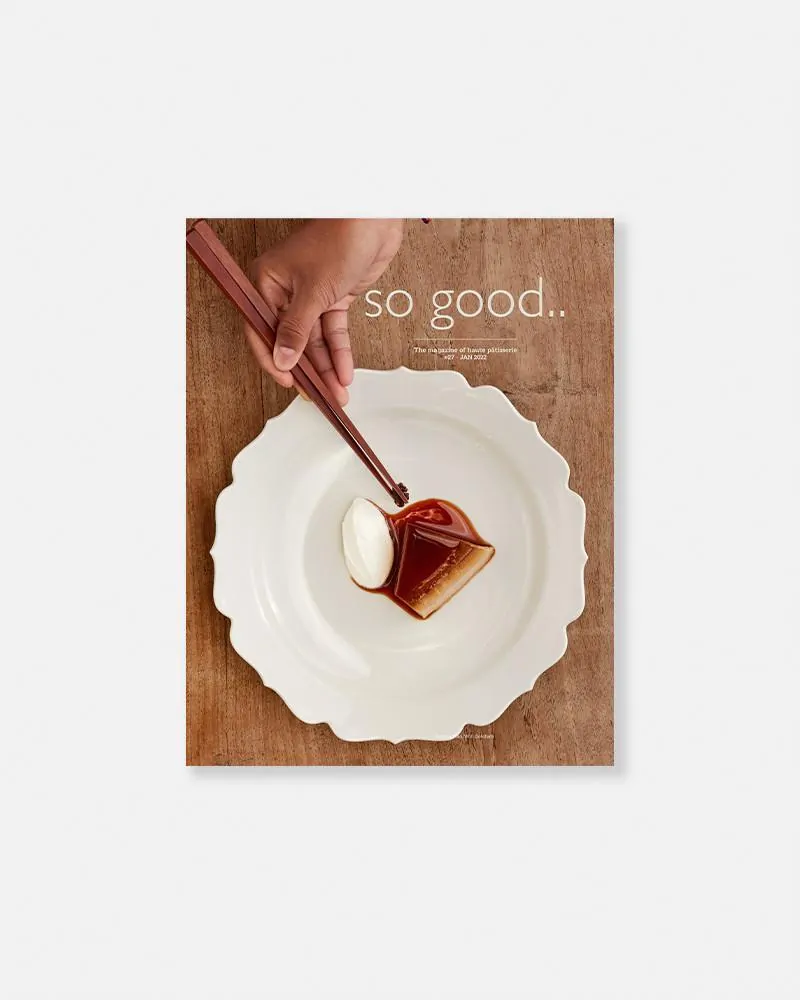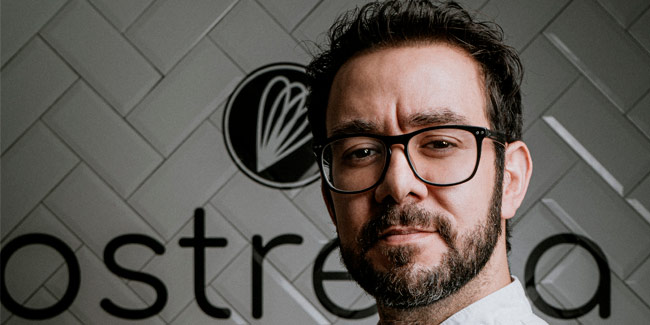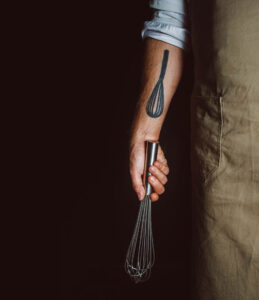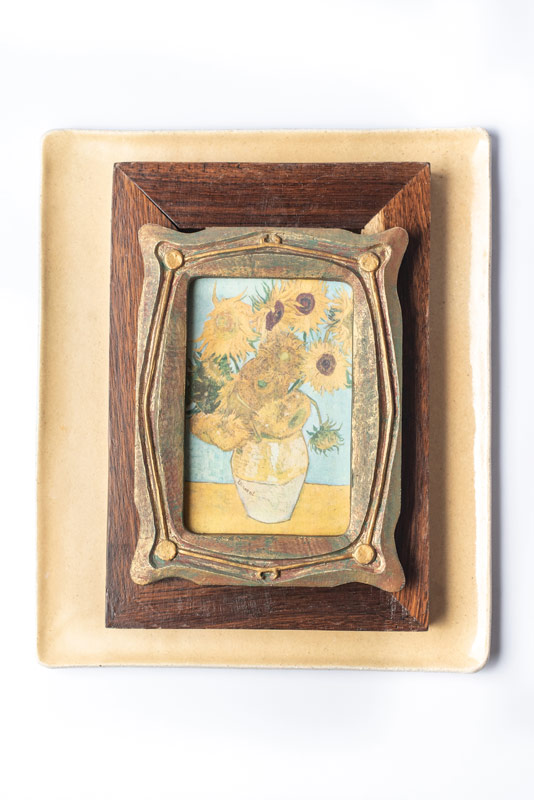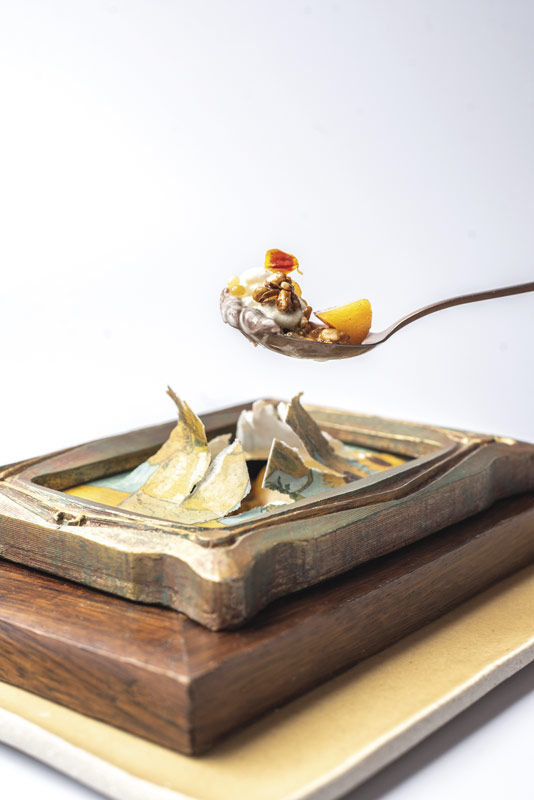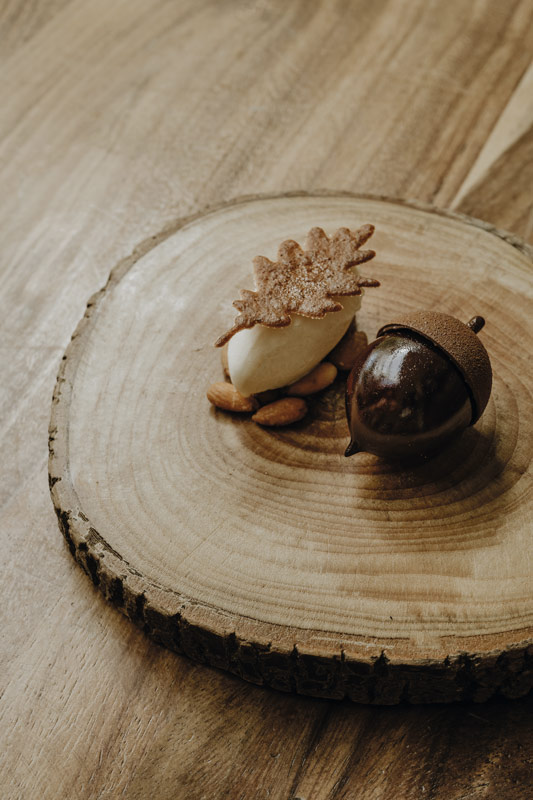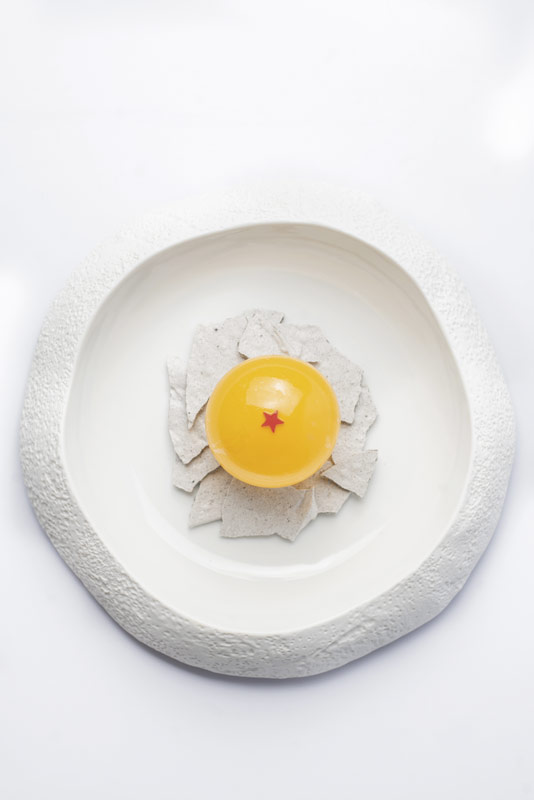Categories Pastry Chef Articles
Jesús Escalera: ‘I want to offer technical pastry, but without being pedantic’
Photos: Appetizer Storyteller
Without a doubt, the Spanish-born pastry chef Jesús Escalera has become one of the great dynamizers of Mexican pâtisserie. He has achieved this thanks to La Postrería, a space he opened with Fernanda Covarrubias in Guadalajara and that after eight years of successful work harmoniously combines training and tasting of desserts and workshop pâtisserie. Trained in the sweet station of restaurants such as The Fat Duck and especially Hacienda Benazuza (a hotel with a gastronomic proposal directed by Ferran Adrià), Escalera stands out for combining, like few others, the gustatory complexity and technical rigor with a playful and relaxed aesthetic vision of pastry. As an example, this pastry chef shares so good #27with very different proposals that exemplify great versatility.
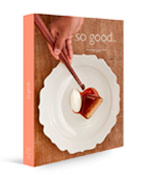
What experiences and professionals have marked you the most in your career?
Every place you go to offers something to learn… even to know what we don’t want to do. But the place that marked me the most was Hacienda Benazuza. First, because it made me see that a dessert is much more than something sweet at the end of a menu. Second, because I could make any dessert from any period of elBulli, and that allowed me to get to know the sweet world of Albert Adrià’s Natura. And third, because I met Fer Covarrubias, my partner, who marked the path of Postrería in Mexico.
‘What started as a relaxed, half-hippie ‘sweet gastrobar’ has now become an icon when it comes to dessert in Mexico’
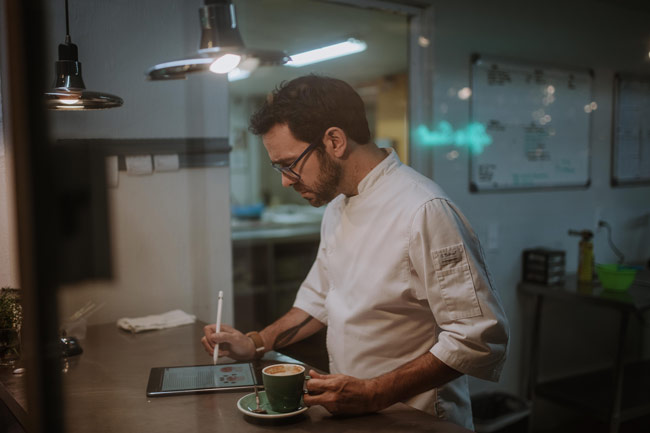
What was the objective of La Postrería?
Since we opened, we were clear that our maxim was to create a ‘sweet culture’. We wanted the customer to understand that dessert could be much more, that it didn’t have to be something cloying, but that it could go beyond the ingredients that are popularly known, but still be appetizing. But we also understood that we could not give a lecture to every customer who came, because it would be very tiring for us and because we would bore 95% of customers who come to enjoy a sweet moment.
And how do you balance gourmandise with the creation of a sweet culture?
That balance is the essence of La Postrería. We want to offer a technical, quality and gourmet pastry, which generates that sweet culture but without falling into the academic formalism that can become pedantic and scare our customers. For that academic part we have our classroom for professionals, in which we try to share all the work at a technical level and understanding that we have done in recent years.
‘That balance is the essence of La Postrería. We want to offer a technical, quality and gourmet pastry, which generates that sweet culture but without falling into the academic formalism’
After eight years, how has La Postrería changed?
There has been a significant change. Fer and I started out alone and today there are 22 of us on the team. In addition, what started as a relaxed, half hippie ‘sweet gastrobar’ has now become an icon when it comes to dessert in Mexico. A place that attracts a large number of professionals and dessert lovers from all over the country. It has been a project that has grown naturally, both in the variety of our product offerings and in the training initiatives that have been twinned with the Postrería.
After eight years promoting this ‘sweet culture’, how has the pastry industry evolved in Mexico?
In recent years there has been a push from great professionals who have opened their own businesses in Mexico. There are also those who were outside the country and are now returning and raising the level of the pastry industry. And then there are those who have passed through our kitchen, either working in a station or doing internships, and are now pastry chefs in well-known restaurants, hotels or pastry shops. Dolcenero, Tout Chocolat, Cuina (where Xano Saguer and Fernanda Prado are truly succeeding), Rosetta Bakery, BreAd… are great examples of the quality that is emerging in the country.
Would you say that in pastry making it is becoming more and more difficult to establish a personality?
Thanks to or because of the networks, everything is becoming more and more globalized. This makes it more and more complicated to define your own style, because, even if you don’t want to, you are conditioned by the ‘trends’ that flood us from a screen.
‘I think that personality is defined more by the particular tastes of each one of us’
And how do you look for your own style in your elaborations?
Honestly, at La Postrería we don’t look for our own style. I think that personality is defined more by the particular tastes of each one of us. That is to say, if you like fresh flavors, your elaborations will clearly reflect that, and likewise if you like lighter textures, for example, or if you have an aesthetic preference for something more playful or relaxed, which is what we like. In the end, it is the customer who, over time, will recognize your way of doing things and who will define ‘your style’.
Where do you think pastry is heading?
We are living a sweet revolution. For years, while cuisine evolved towards purer flavors and became more socially and ecologically responsible, pastry was stagnant, perhaps for fear that the customer would not understand that change or perhaps because ‘that’s the way it’s always been done’. In recent years there has been a dramatic change and finally the sweet world has made the leap taking those same guidelines. We have the machinery and the necessary research to reduce some sugar, butter or flour, giving more prominence to the product and creating a fresher and lighter pastry. I think the world’s pâtisserie is moving more in that direction.
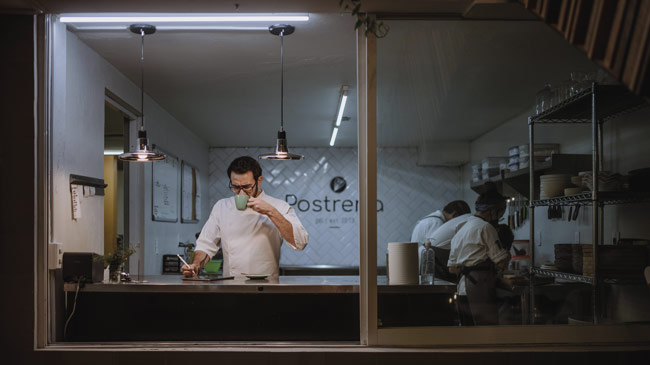
Rice canvases
This year we are presenting a collection that I think can work nicely. Many of us have thought about what it would be like to get into a painting, that is, to travel to that place, to that time or to that surreal moment. We took it to gastronomy and asked ourselves what it would be like to eat a painting. What would it taste like? I realized that the possibilities were enormous, there are as many varieties of desserts as there are paintings, and even more, since each person interprets art differently. We were inspired by the prints that were made on rice wafers on birthday cakes long time ago. These wafers also have a texture similar to that of a canvas. We chose certain paintings that inspired us, and from there we started to play, either with flavors of a country or an era, or with chromaticism and taste associations that each work suggested to us. In addition, another interesting aspect of this bet is that there is no need to look for an aesthetic to the dessert, since it is already covered by the canvas. The diner only has to tear ‘the canvas’ without knowing what they are going to find.
An example of these canvases is Van Gogh’s ‘Sunflowers’. It hides a dessert with more woody and sober flavors. We played with sunflower seeds, bourbon, marigold petals, honey, pollen and grilled peach.
